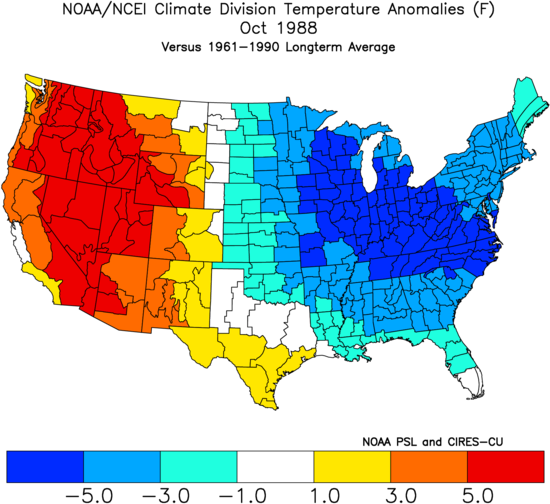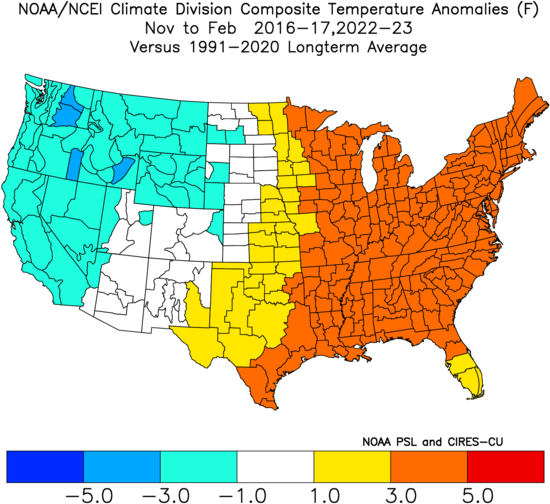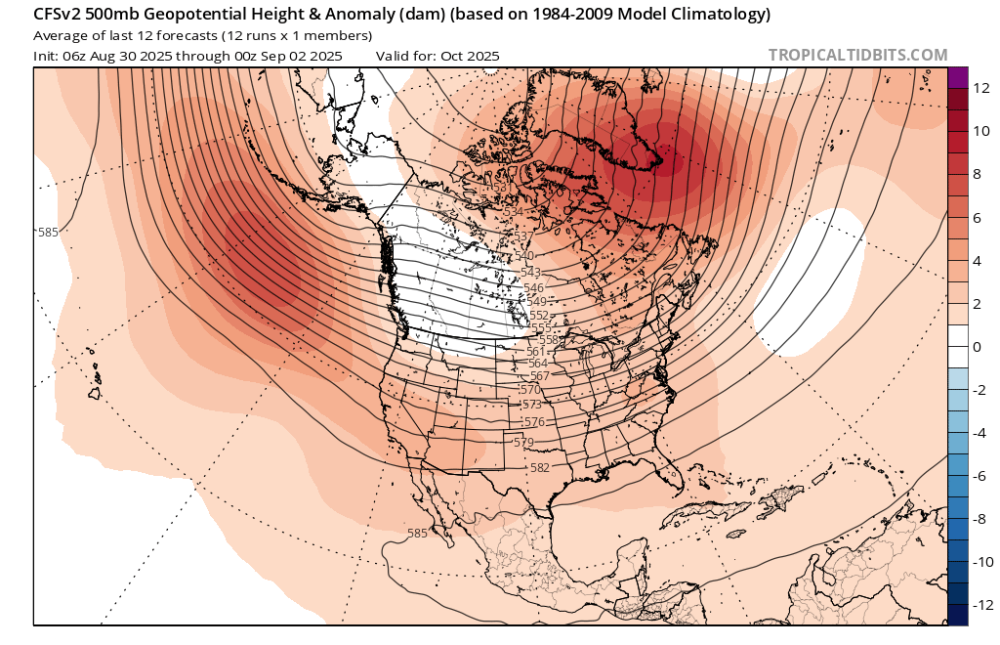
PhiEaglesfan712
Members-
Posts
998 -
Joined
-
Last visited
Content Type
Profiles
Blogs
Forums
American Weather
Media Demo
Store
Gallery
Everything posted by PhiEaglesfan712
-
September 2025 OBS-Discussion centered NYC subforum
PhiEaglesfan712 replied to wdrag's topic in New York City Metro
1988 was one that turned cold really quickly. The summer, particularly from June to the first half/two-thirds of August, was then a warmest on record. Then at the end of August, it just turned cold, and never really looked back. October 1988 was one of the coldest on record, and in some spots, beat out the cold standard of October 1976: Come to think of it, the warm west makes this look like the October version of February (or JFM) 2015. -
September 2025 OBS-Discussion centered NYC subforum
PhiEaglesfan712 replied to wdrag's topic in New York City Metro
Barring a 10/2/2019 event, this should be all she wrote for the summer weather until next season. -
E PA/NJ/DE Autumn 2025 Obs/Discussion
PhiEaglesfan712 replied to PhiEaglesfan712's topic in Philadelphia Region
Drought guy wrong again. I've been drought free since March 5. -
2025-2026 ENSO
PhiEaglesfan712 replied to 40/70 Benchmark's topic in Weather Forecasting and Discussion
I love how you cherry pick "Philly to Boston". Why not the mid-Atlantic (Philly to DC)? Oh wait, a lot of places there had a higher snow average the last 2 years than in 16-17 to 22-23, so it won't fit your agenda? -
2025-2026 ENSO
PhiEaglesfan712 replied to 40/70 Benchmark's topic in Weather Forecasting and Discussion
Classic case is 2011. That was a cold October, with a snowstorm at the end of the month. Pattern flipped soon thereafter, and it was blowtorch from November through March. -
2025-2026 ENSO
PhiEaglesfan712 replied to 40/70 Benchmark's topic in Weather Forecasting and Discussion
Octobers have been almost always warmer than average since 2010. Funny enough, the only 2 that were below average were 2011 and 2022, and both of those winters were snowless blowtorches. -
September 2025 OBS-Discussion centered NYC subforum
PhiEaglesfan712 replied to wdrag's topic in New York City Metro
This is as good as you're going to get at this time of year. Watch us have 100-degree heat at this time next year. -
2025-2026 ENSO
PhiEaglesfan712 replied to 40/70 Benchmark's topic in Weather Forecasting and Discussion
FWIW, the last 2 -IODs that were as strong as this year torched in November-February. The only difference is that (outside of Baltimore and DC), we got the blizzard in mid-March 2017, otherwise 16-17 would have been a snow shutout like 22-23. The big difference this time around is that we had a cool August (2016 and 2022 had record warm Augusts). -
If I were running the team, I would trade Jalen Carter as soon as possible, hopefully get a lot of picks out of it, and let someone else pay him in the offseason (and be their problem). We should have kept CJGJ instead. The difference between CJGJ and Carter is that CJGJ knows where the line is, and doesn't cross it. Can't say that about Carter.
-
2025-2026 ENSO
PhiEaglesfan712 replied to 40/70 Benchmark's topic in Weather Forecasting and Discussion
If Nino 1+2 does not return to an el nino state, then this winter will have a more la nina feel to it. Last year felt like a tug-of-war between the la nina in 3.4 and the el nino in 1+2. It certainly did not behave like a la nina. -
2025-2026 ENSO
PhiEaglesfan712 replied to 40/70 Benchmark's topic in Weather Forecasting and Discussion
It looks like the ONI and RONI are converging: JJA 2025 ONI (NOAA): -0.2 JJA 2025 RONI: -0.46 August 2025 PDO: -3.23 (July 2025 PDO was adjusted to -4.12) If the el nino happens in 2026-27, I can only see it going weak or moderate. If it happens in 2027-28, it will be much stronger with the extra year to develop. (I mean, it's no surprise the 15-16 el nino was very strong because of the extra 3 years it had to develop. It didn't happen in 12-13 as most people thought, or even 14-15.) -
2025-2026 ENSO
PhiEaglesfan712 replied to 40/70 Benchmark's topic in Weather Forecasting and Discussion
I guess this means the upcoming winter is cooked and torched. I had a below 161 ACE before the season even begun, and it was pretty apparent by mid-June. The better question now is if we're even going to hit half of 161 ACE. -
2025-2026 ENSO
PhiEaglesfan712 replied to 40/70 Benchmark's topic in Weather Forecasting and Discussion
The big difference is in 1+2. Last year was never going to behave like a la nina with that east-based el nino. -
2025-2026 ENSO
PhiEaglesfan712 replied to 40/70 Benchmark's topic in Weather Forecasting and Discussion
-
2025-2026 ENSO
PhiEaglesfan712 replied to 40/70 Benchmark's topic in Weather Forecasting and Discussion
Yeah, it's about time to face the music and accept that this season may be a below average activity hurricane season. Keep in mind, we're at the point when Felix hit. No major storms formed after that point that year, and that was a strong la nina. A one-storm wonder season is not even unprecedented. Andrew hit in August, like Erin, and there wasn't another major storm the rest of the season. -
2025-2026 ENSO
PhiEaglesfan712 replied to 40/70 Benchmark's topic in Weather Forecasting and Discussion
Technically, it was 2023, if we go strictly by JJA. However, September was warmer than June in 2023, so JAS 2023 would have taken us above the 1981-2010 JJA average. -
As I said, watch there be 100-degree heat at this time next year. It hasn't happened since 1953, and we are way overdue for this. Fall set in early last year as well. It can't possibly happen 3 years in a row. It's been here for a while. The pattern changed around August 1. Aside from the heatwave from about the 12th-17th, it's been fall-like for the most part. Summer is likely not coming back until next year, unless we get that odd temperature spike (like Oct. 2, 2019).
-
High 75 at O'Hare yesterday. I'll be leaving Chicago shortly.
-
2025-2026 ENSO
PhiEaglesfan712 replied to 40/70 Benchmark's topic in Weather Forecasting and Discussion
If there is a la nina, then hope for something weak (like 17-18). A moderate la nina is not going to be favorable for the winter (like 11-12 and 22-23). -
With meteorological summer coming to an end, it is now time to start a discussion for fall.
-
The summer pretty much ended on August 17 in NYC this year. The pattern started to turn cooler around August 1. If not for the August 12-17 heatwave, summer would have pretty much ended on July 31.But knowing that the heat has been absent the last 2 years at this time of year (during the US Open), I'm willing to bet we are due for record heat at this time next year. After all, NYC hasn't reached 100 degrees during this time of year since 1953. NYC is way overdue for one.
-
High yesterday was 74 at O'Hare. I got to enjoy The Lumineers concert at Soldier Field. Today will be my last day in Chicago.
-
High yesterday at O'Hare was 70. Perfect weather in the morning, but a few sprinkles in the evening. Finishing up my donuts from the tour yesterday.
-
2025-2026 ENSO
PhiEaglesfan712 replied to 40/70 Benchmark's topic in Weather Forecasting and Discussion
The pattern really started in 2016-17. That was the year places like Baltimore and DC had like 3 inches of snow. That started their record low 7-year stretch, which lasted until 2022-23. The last two winters, Baltimore and DC got some snow, and those places bounced of those lows. I wonder if the same thing does happen to NYC and Boston.





